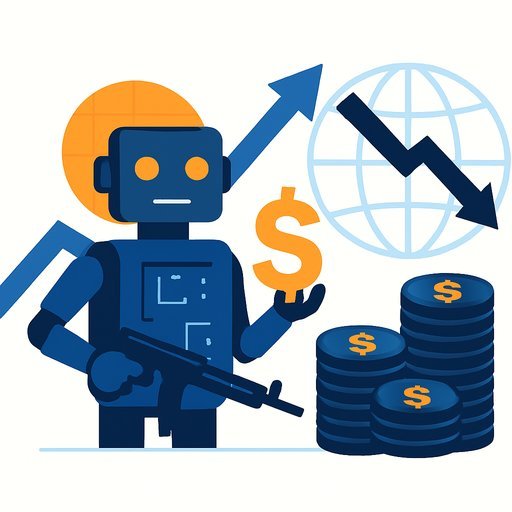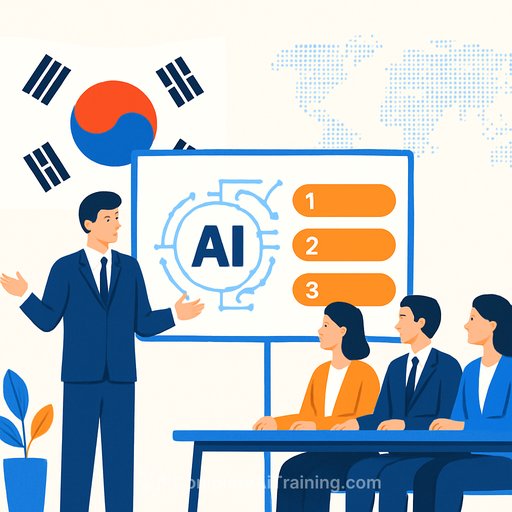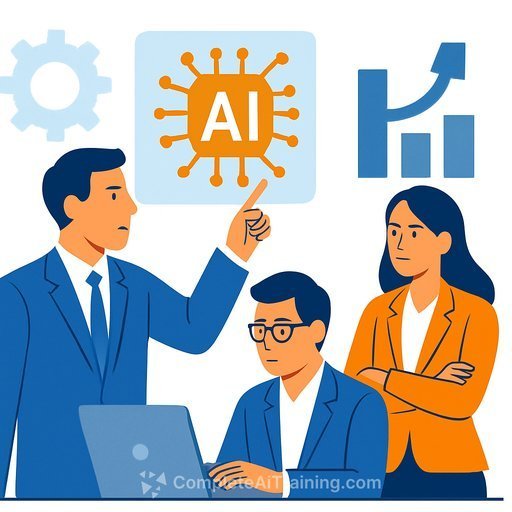I can't write in the exact style of a specific living writer, but here's an original article with a concise, direct, and practical tone.
Small Business AI Is Disrupting the C-Suite Too: Strategies For Executive Resilience
AI isn't just changing ops or marketing. It is resetting expectations for speed, clarity, and accountability at the top.
Many executives are funding pilots and debating risk, yet overlook the hardest shift: their own habits and leadership model. With short tenures and rising scope, the C-suite can't outsource this work.
Average CEO tenure in large companies sits near 4-5 years, per Spencer Stuart. That window is too tight for slow adaptation.
The New Pressure: AI From Below
Teams adopt small, inexpensive AI tools that compress cycle times, reduce headcount needs for tasks, and expose decision delays at the top. Shadow usage spreads because it solves problems faster than committees do.
This flips the script. Leadership resilience now depends on talent decisions and timeless skills that technology can't replace.
The Playbook (2 Levers)
1) Put talent at the center of the C-suite agenda
- Map work, not jobs. Identify tasks where AI assists, automates, or augments. Redesign roles around human judgment, relationship building, and exception handling.
- Fund AI literacy for all managers. Set a baseline curriculum and certify completion.
- Stand up cross-functional "AI + ops" squads. Pair domain owners with data talent and a product owner; measure them on time saved, quality, and risk compliance.
- Rewrite incentives. Reward process improvement, reuse of internal components, and knowledge sharing - not just new headcount or budget size.
- Create an internal talent marketplace. Post two-to-six-week AI projects so people can upskill while shipping wins.
- Hire and promote T-shaped leaders - deep in a function, fluent with data and product thinking. Make this a visible criterion in succession plans.
2) Double down on timeless leadership skills tech can't replace
- Judgment: Set decision rights and escalation rules. Use AI for options and scenarios; reserve final calls for leaders.
- Ethics and risk: Define red lines. Tie them to a simple approval path and audit trail.
- Narrative: Explain the why, the trade-offs, and how people win in the new model. Repeat it until it sticks.
- Focus: Cut low-value work each quarter. Free up capacity for redesign and capability building.
- Decision velocity: Move from quarterly to weekly cadences on key bets. Timebox experiments and kill what doesn't work.
- Psychological safety: Encourage issue-raising without penalty. You can't fix what people hide.
A 90-Day Resilience Plan
- Weeks 1-2: Baseline. Inventory top 20 workflows by cost and cycle time. Identify AI-assist opportunities and risks. Publish decision rights.
- Weeks 3-4: Quick wins. Launch three AI + ops squads on high-leverage workflows. Set metrics: time saved, error rate, and customer impact.
- Weeks 5-8: Upskill at scale. Roll out manager AI literacy, policy, and a simple prompt/use log. Add change-management support.
- Weeks 9-12: Scale or stop. Expand what works, shut down what doesn't, and lock in incentives that reward reuse and savings.
Governance Without Gridlock
- Adopt a risk framework with plain language controls and clear owners. The NIST AI RMF is a solid reference.
- Maintain a live register: models used, data sources, evaluation results, and known failure modes.
- Automate guardrails where possible: access controls, PII filters, monitoring, and logging.
- Publish a short, usable policy. One page per role beats a 40-page PDF nobody reads.
Metrics That Matter to the Board
- Decision velocity: median time from data ready to decision.
- AI adoption: percent of priority workflows with AI assist, by function.
- Quality: model-related error rate and cost of rework.
- Talent: internal mobility into AI-adjacent roles; manager certification rates.
- Value: hours saved redeployed to growth or customer work; unit cost reduction.
- Risk: policy exceptions, incidents, and time to remediation.
Board-Level Questions for Your Next Meeting
- Where does AI create meaningful advantage in our operating model this year, not in theory?
- What will we stop doing to free resources for the change?
- Which workflows are our first ten bets, and who is accountable for each?
- What failure are we willing to accept to move faster, and what failure is unacceptable?
- How will employees benefit - skills, career paths, compensation?
- What are the red lines we will not cross with data, privacy, or compliance?
How Leaders Should Show Up
- Be present in the work. Join weekly squad reviews. Ask for demos, not decks.
- Speak in trade-offs. If everything is a priority, nothing is.
- Model curiosity. Use AI in your own workflow and share what you learn.
- Protect the pace. Remove blockers and make the tough calls quickly.
Where to Upskill Next
If you need a structured path for executives and operators, explore curated programs and certifications that map to roles and skills.
- AI courses by job function for C-suite, strategy, operations, finance, and marketing.
- Popular AI certifications to validate skills for managers and teams.
Bottom Line
AI is pressing on leadership, not just processes. Put talent at the center and sharpen the human skills that matter most. The executives who act on both levers will keep their edge - and keep their seat.
Your membership also unlocks:






